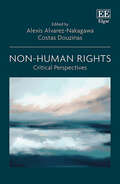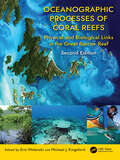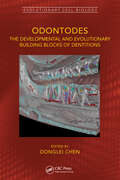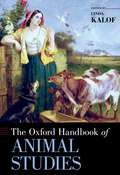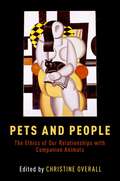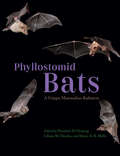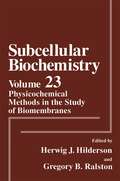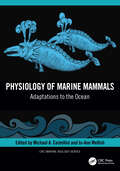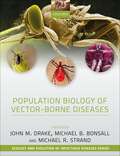- Table View
- List View
Non-Human Rights: Critical Perspectives
Non-human rights are a reality today: this book unpacks their paradoxes as well as their significance for our historic crucible. As animals, rivers, mountains, rainforests, ecosystems, and synthetic entities such as machines, AI, and robots gain recognition as subjects of rights in different parts of the world, non-human rights become part of our ordinary legal landscape and vocabulary. This timely book provides a critical outlook on this rising trend at the crossroads of two of the main concerns of the 21st century: climate change and automation.In seeking to address the foundations, genealogies, philosophies, and impacts of non-human rights, the contributors to this volume examine both their potential and limitations. Are non-human rights just a mere extension of the liberal human rights discourse or, as some suggest, something else and new based on different principles? Are they a ‘revolution’ or just ‘more of the same’? Are they a practical solution that could ‘save us’ from climate disaster and self-destruction through automation or part of the problem and obstacle for social change?This book will be a vital resource for scholars and students of human rights, environmental law, animal rights, law and technology studies, legal theory, socio-legal studies, constitutional law and public international law. Providing an accessible overview of the changing patterns of the rights discourse in contemporary societies, it will also benefit anthropologists, climate and animal rights activists, political scientists, international relations scholars, policy makers and sociologists.
Oceanographic Processes of Coral Reefs: Physical and Biological Links in the Great Barrier Reef
In the last two decades since publication of the first edition, substantial advancements have been made in the science, the need for transdisciplinary approaches to coral reef protection greater than ever before. This new edition, now in full color throughout with accompanying animations, goes beyond identifying foundational information and current problems to pinpoint science-based solutions for managers, stakeholders and policy makers. Coral reefs are connected by currents that carry plankton and the larvae of many reef-based organisms. Further, they supply food to reefs. Currents also bring pollutants from the land and, together with the atmosphere, affect the surrounding ocean. The chapters in this book provide a much-needed review of the biophysics of reefs with an emphasis on the Great Barrier Reef as an ecosystem. The focus is on interactions between currents, waves, sediment and the dynamics of coastal and reef-based ecosystems. The topographic complexity of reefs redirects mainstream currents, creates tidal eddies, mushroom jets, boundary layers, stagnation zones, and this turbulence is enhanced by the oceanographic chaos in the adjoining Coral Sea. This is the environment in which particles and organisms, of a range of sizes live, from tiny plankton to megafauna. This generates faunal connectivity at scales of meters to thousands of km within the Great Barrier Reef and with the adjoining ocean. Pollution from land-use is increasing and remedial measures are described both on land and on coral cays. The impact of climate change is quantified in case studies about mangroves and corals. Modelling this biophysical complexity is increasing in sophistication, and the authors suggest how the field can advance further.
Odontodes: The Developmental and Evolutionary Building Blocks of Dentitions (Evolutionary Cell Biology)
The odontode system, which encompasses teeth and other dentine-based structures, is ancient. Odontodes are present in the oldest vertebrate fossils, dating back 500 million years, and still play an important role in the anatomy and function of living jawed vertebrates. Fossils preserve odontode tissues with remarkable nanoscale fidelity, allowing the evolution and diversification of the odontode system to be studied in deep time as well as across the diversity of living vertebrates. This synthetic volume presents an overview of odontode research by internationally leading researchers from different fields of biology.. Key Features Summarizes classic and cutting-edge research devoted to the development and evolution Focuses on the cellular aspects of odontogenesis Documents the structural and functional diversity of odontode tissues Describes the patterning mechanisms of dentitions in various vertebrate groups Provides a thorough index for students
Ostrich (Large Print)
This page shows an ostrich from the side with its small head in the top left of the page and tail at the centre right. There is a locator dot shown, which will be at the top left of the page when the image is the right way up.The ostrich is facing to the left so one eye can be found, and its beak is open. Directly down from its head, its long, slender, bare neck leads to its large, black feathered body.The ostrich, despite being flightless, has two large strong wings. One of these, with white feathers at the tip is shown in the centre of the image. To the right of its wing is its white floppy feathered tail. The ostrich stands on two very long, bare legs, with large toes and claws at the end.
Ostrich (UEB Contracted)
This page shows an ostrich from the side with its small head in the top left of the page and tail at the centre right. There is a locator dot shown, which will be at the top left of the page when the image is the right way up.The ostrich is facing to the left so one eye can be found, and its beak is open. Directly down from its head, its long, slender, bare neck leads to its large, black feathered body.The ostrich, despite being flightless, has two large strong wings. One of these, with white feathers at the tip is shown in the centre of the image. To the right of its wing is its white floppy feathered tail. The ostrich stands on two very long, bare legs, with large toes and claws at the end.
Ostrich (UEB Uncontracted)
This page shows an ostrich from the side with its small head in the top left of the page and tail at the centre right. There is a locator dot shown, which will be at the top left of the page when the image is the right way up.The ostrich is facing to the left so one eye can be found, and its beak is open. Directly down from its head, its long, slender, bare neck leads to its large, black feathered body.The ostrich, despite being flightless, has two large strong wings. One of these, with white feathers at the tip is shown in the centre of the image. To the right of its wing is its white floppy feathered tail. The ostrich stands on two very long, bare legs, with large toes and claws at the end.
Oviraptor (Large Print)
This is an image of an Oviraptor and an Oviraptor skeleton seen from the side and facing to the right. The number of bones in diagram of the skeleton has been reduced to make it easier to read tactually. There is a locator dot shown, which will be at the top left of the page when the image is the correct way up. A scale line stretches across the centre of the page. The Oviraptor was possibly one of the feathered dinosaurs. Its diet is unknown although some evidence points to it being carnivorous. It grew up to two metres in length. It is pictured here at the top of the page. At the left centre of the image is the dinosaurs long tail going to the right. To the right the dinosaurs body can be found with four legs at the bottom of the image. The two back legs on the left are much longer than the front legs on the right. It is thought to have been bipedal, walking on its back legs. At the far top right of the image is the Oviraptorâ TMs head with its distinctive crest. Like a modern bird, it did not have teeth. Only one of its eyes can be found. The Oviraptor skeleton: The image of the skeleton is at the bottom of the page. It is shown at the same scale and is posed in the same way as the picture up the page. At the centre left of the image is the dinosaurs tail going right to its pelvis. To the right again is its spine going right and up the page to its head. Only one of its eye sockets can be found. Its ribs are in the centre of the image and the bones of its legs can be found at the bottom of the page.
Oviraptor (UEB Contracted)
This is an image of an Oviraptor and an Oviraptor skeleton seen from the side and facing to the right. The number of bones in diagram of the skeleton has been reduced to make it easier to read tactually. There is a locator dot shown, which will be at the top left of the page when the image is the correct way up. A scale line stretches across the centre of the page. The Oviraptor was possibly one of the feathered dinosaurs. Its diet is unknown although some evidence points to it being carnivorous. It grew up to two metres in length. It is pictured here at the top of the page. At the left centre of the image is the dinosaurs long tail going to the right. To the right the dinosaurs body can be found with four legs at the bottom of the image. The two back legs on the left are much longer than the front legs on the right. It is thought to have been bipedal, walking on its back legs. At the far top right of the image is the Oviraptorâ TMs head with its distinctive crest. Like a modern bird, it did not have teeth. Only one of its eyes can be found. The Oviraptor skeleton: The image of the skeleton is at the bottom of the page. It is shown at the same scale and is posed in the same way as the picture up the page. At the centre left of the image is the dinosaurs tail going right to its pelvis. To the right again is its spine going right and up the page to its head. Only one of its eye sockets can be found. Its ribs are in the centre of the image and the bones of its legs can be found at the bottom of the page.
Oviraptor (UEB Uncontracted)
This is an image of an Oviraptor and an Oviraptor skeleton seen from the side and facing to the right. The number of bones in diagram of the skeleton has been reduced to make it easier to read tactually. There is a locator dot shown, which will be at the top left of the page when the image is the correct way up. A scale line stretches across the centre of the page. The Oviraptor was possibly one of the feathered dinosaurs. Its diet is unknown although some evidence points to it being carnivorous. It grew up to two metres in length. It is pictured here at the top of the page. At the left centre of the image is the dinosaurs long tail going to the right. To the right the dinosaurs body can be found with four legs at the bottom of the image. The two back legs on the left are much longer than the front legs on the right. It is thought to have been bipedal, walking on its back legs. At the far top right of the image is the Oviraptorâ TMs head with its distinctive crest. Like a modern bird, it did not have teeth. Only one of its eyes can be found. The Oviraptor skeleton: The image of the skeleton is at the bottom of the page. It is shown at the same scale and is posed in the same way as the picture up the page. At the centre left of the image is the dinosaurs tail going right to its pelvis. To the right again is its spine going right and up the page to its head. Only one of its eye sockets can be found. Its ribs are in the centre of the image and the bones of its legs can be found at the bottom of the page.
The Oxford Handbook of Animal Studies (Oxford Handbooks)
Intellectual struggles with the "animal question"-- how humans can rethink and reconfigure their relationships with other animals-- first began to take hold in the 1970s. Over the next forty years, scholars from a wide range of fields would make sweeping reevaluations of the relationship between humans and other animals. The Oxford Handbook of Animal Studies brings these diverse evaluations together for the first time, paying special attention to the commodification of animals, the degradation of the natural world and a staggering loss of animal habitat and species extinction, and the increasing need for humans to coexist with other animals in urban, rural and natural contexts. Linda Kalof maps these themes into the five major categories that structure this volume: Animals in the Landscape of Law, Politics and Public Policy; Animal Intentionality, Agency and Reflexive Thinking; Animals as Objects in Science, Food, Spectacle and Sport; Animals in Cultural Representations; and Animals in Ecosystems. Written by international scholars with backgrounds in philosophy, law, history, English, art, sociology, geography, archaeology, environmental studies, cultural studies, and animal advocacy, the thirty chapters in this handbook investigate key issues and concepts central to understanding our current relationship with other animals and the potential for coexistence in an ecological community of living beings.
Pachycephalosaurus (Large Print)
This is an image of a Pachycephalosaurus and a Pachycephalosaurus skeleton seen from the side and facing to the right. The number of bones in the diagram of the skeleton has been reduced to make it easier to read tactually. There is a locator dot shown, which will be at the top left of the page when the image is the correct way up. A scale line stretches across the centre of the page. The Pachycephalosaurus was a herbivore and up to eight metres long. It is pictured here at the top of the page. At the top left of the image is the dinosaur's long tail. To the right the dinosaur's long body can be found with four legs at the bottom of the image. The two back legs on the left are much longer than the front legs on the right. It is thought to have been bipedal, walking on its back legs. At the far right of the image is the Pachycephalosaurus's head with its distinctive thick skull dome and three spikes on the far right. Only one of its eyes and one of its nostrils can be found. The Pachycephalosaurus skeleton: The image of the skeleton is at the bottom of the page. It is shown at the same scale and is posed in the same way as the picture up the page. At the top left of the image is the dinosaur's tail. To the right is its pelvis. Right again is its spine leading right to its neck and skull with its distinctive thick skull dome and three spikes. Only one of its eye sockets and one of its nostrils can be found. Its ribs are right of the centre of the image and the bones of its legs can be found at the bottom of the page.
Pachycephalosaurus (UEB Contracted)
This is an image of a Pachycephalosaurus and a Pachycephalosaurus skeleton seen from the side and facing to the right. The number of bones in the diagram of the skeleton has been reduced to make it easier to read tactually. There is a locator dot shown, which will be at the top left of the page when the image is the correct way up. A scale line stretches across the centre of the page. The Pachycephalosaurus was a herbivore and up to eight metres long. It is pictured here at the top of the page. At the top left of the image is the dinosaur's long tail. To the right the dinosaur's long body can be found with four legs at the bottom of the image. The two back legs on the left are much longer than the front legs on the right. It is thought to have been bipedal, walking on its back legs. At the far right of the image is the Pachycephalosaurus's head with its distinctive thick skull dome and three spikes on the far right. Only one of its eyes and one of its nostrils can be found. The Pachycephalosaurus skeleton: The image of the skeleton is at the bottom of the page. It is shown at the same scale and is posed in the same way as the picture up the page. At the top left of the image is the dinosaur's tail. To the right is its pelvis. Right again is its spine leading right to its neck and skull with its distinctive thick skull dome and three spikes. Only one of its eye sockets and one of its nostrils can be found. Its ribs are right of the centre of the image and the bones of its legs can be found at the bottom of the page.
Pachycephalosaurus (UEB Uncontracted)
This is an image of a Pachycephalosaurus and a Pachycephalosaurus skeleton seen from the side and facing to the right. The number of bones in the diagram of the skeleton has been reduced to make it easier to read tactually. There is a locator dot shown, which will be at the top left of the page when the image is the correct way up. A scale line stretches across the centre of the page. The Pachycephalosaurus was a herbivore and up to eight metres long. It is pictured here at the top of the page. At the top left of the image is the dinosaur's long tail. To the right the dinosaur's long body can be found with four legs at the bottom of the image. The two back legs on the left are much longer than the front legs on the right. It is thought to have been bipedal, walking on its back legs. At the far right of the image is the Pachycephalosaurus's head with its distinctive thick skull dome and three spikes on the far right. Only one of its eyes and one of its nostrils can be found. The Pachycephalosaurus skeleton: The image of the skeleton is at the bottom of the page. It is shown at the same scale and is posed in the same way as the picture up the page. At the top left of the image is the dinosaur's tail. To the right is its pelvis. Right again is its spine leading right to its neck and skull with its distinctive thick skull dome and three spikes. Only one of its eye sockets and one of its nostrils can be found. Its ribs are right of the centre of the image and the bones of its legs can be found at the bottom of the page.
Parasaurolophus (Large Print)
This is an image of a Parasaurolophus and a Parasaurolophus skeleton seen from the side and facing to the right. The number of bones in the diagram of the skeleton has been reduced to make it easier to read tactually. There is a locator dot shown, which will be at the top left of the page when the image is the correct way up. A scale line stretches across the centre of the page. The Parasaurolophus was a herbivore and up to ten metres long. It is pictured here at the top of the page. At the top left of the image is the dinosaur's tail. Down and right, the dinosaur's barrel-shaped body can be found with four legs at the bottom of the image. The two back legs on the left are much longer than the front legs on the right. It is thought to have walked both on its two back legs and on all four. At the far right of the image is the Parasaurolophus's head with its distinctive cranial crest pointing up and left. Only one of its eyes and one of its nostrils can be found. The Parasaurolophus skeleton: The image of the skeleton is at the bottom of the page. It is shown at the same scale and is posed in the same way as the picture up the page. At the top left of the image is the dinosaur'stail. Down and right is its pelvis. Right again is its spine leading down and right to its neck and skull with its distinctive cranial crest pointing up and left. Only one of its eye sockets and one of its nostrils can be found. Its ribs are in the centre of the image and the bones of its legs can be found at the bottom of the page.
Parasaurolophus (UEB Contracted)
This is an image of a Parasaurolophus and a Parasaurolophus skeleton seen from the side and facing to the right. The number of bones in the diagram of the skeleton has been reduced to make it easier to read tactually. There is a locator dot shown, which will be at the top left of the page when the image is the correct way up. A scale line stretches across the centre of the page. The Parasaurolophus was a herbivore and up to ten metres long. It is pictured here at the top of the page. At the top left of the image is the dinosaur's tail. Down and right, the dinosaur's barrel-shaped body can be found with four legs at the bottom of the image. The two back legs on the left are much longer than the front legs on the right. It is thought to have walked both on its two back legs and on all four. At the far right of the image is the Parasaurolophus's head with its distinctive cranial crest pointing up and left. Only one of its eyes and one of its nostrils can be found. The Parasaurolophus skeleton: The image of the skeleton is at the bottom of the page. It is shown at the same scale and is posed in the same way as the picture up the page. At the top left of the image is the dinosaur'stail. Down and right is its pelvis. Right again is its spine leading down and right to its neck and skull with its distinctive cranial crest pointing up and left. Only one of its eye sockets and one of its nostrils can be found. Its ribs are in the centre of the image and the bones of its legs can be found at the bottom of the page.
Parasaurolophus (UEB Uncontracted)
This is an image of a Parasaurolophus and a Parasaurolophus skeleton seen from the side and facing to the right. The number of bones in the diagram of the skeleton has been reduced to make it easier to read tactually. There is a locator dot shown, which will be at the top left of the page when the image is the correct way up. A scale line stretches across the centre of the page. The Parasaurolophus was a herbivore and up to ten metres long. It is pictured here at the top of the page. At the top left of the image is the dinosaur's tail. Down and right, the dinosaur's barrel-shaped body can be found with four legs at the bottom of the image. The two back legs on the left are much longer than the front legs on the right. It is thought to have walked both on its two back legs and on all four. At the far right of the image is the Parasaurolophus's head with its distinctive cranial crest pointing up and left. Only one of its eyes and one of its nostrils can be found. The Parasaurolophus skeleton: The image of the skeleton is at the bottom of the page. It is shown at the same scale and is posed in the same way as the picture up the page. At the top left of the image is the dinosaur'stail. Down and right is its pelvis. Right again is its spine leading down and right to its neck and skull with its distinctive cranial crest pointing up and left. Only one of its eye sockets and one of its nostrils can be found. Its ribs are in the centre of the image and the bones of its legs can be found at the bottom of the page.
Pets and People: The Ethics of Our Relationships with Companion Animals
Animal ethics is generating growing interest both within academia and outside it. This book focuses on ethical issues connected to animals who play an extremely important role in human lives: companion animals ("pets"), with a special emphasis on dogs and cats, the animals most often chosen as pets. Companion animals are both vulnerable to and dependent upon us. What responsibilities do we owe to them, especially since we have the power and authority to make literal life-and-death decisions about them? What kinds of relationships should we have with our companion animals? And what might we learn from cats and dogs about the nature and limits of our own morality? The contributors write from a variety of philosophical perspectives, including utilitarianism, care ethics, feminist ethics, phenomenology, and the genealogy of ideas. The eighteen chapters are divided into two sections, to provide a general background to ethical debate about companion animals, followed by a focus on a number of crucial aspects of human relationships to companion animals. The first section discusses the nature of our relationships to companion animals, the foundations of our moral responsibilities to companion animals, what our relationships with companion animals teach us, and whether animals themselves can act ethically. The second part explores some specific ethical issues related to crucial aspects of companion animals' lives--breeding, reproduction, sterilization, cloning, adoption, feeding, training, working, sexual interactions, longevity, dying, and euthanasia.
Phyllostomid Bats: A Unique Mammalian Radiation
With more than two hundred species distributed from California through Texas and across most of mainland Mexico, Central and South America, and islands in the Caribbean Sea, the Phyllostomidae bat family (American leaf-nosed bats) is one of the world’s most diverse mammalian families. From an insectivorous ancestor, species living today, over about 30 million years, have evolved a hyper-diverse range of diets, from blood or small vertebrates, to consuming nectar, pollen, and fruit. Phyllostomid plant-visiting species are responsible for pollinating more than five hundred species of neotropical shrubs, trees, vines, and epiphytes—many of which are economically and ecologically important—and they also disperse the seeds of at least another five hundred plant species. Fruit-eating and seed-dispersing members of this family thus play a crucial role in the regeneration of neotropical forests, and the fruit eaters are among the most abundant mammals in these habitats. Coauthored by leading experts in the field and synthesizing the latest advances in molecular biology and ecological methods, Phyllostomid Bats is the first overview in more than forty years of the evolution of the many morphological, behavioral, physiological, and ecological adaptations in this family. Featuring abundant illustrations as well as details on the current conservation status of phyllostomid species, it is both a comprehensive reference for these ecologically vital creatures and a fascinating exploration of the evolutionary process of adaptive radiation.
Physicochemical Methods in the Study of Biomembranes (Subcellular Biochemistry #23)
In mammalian cells many physiological processes rely on the dynamics of the organization of lipids and proteins in biological membranes. The topics in this volume deal with physicochemical methods in the study of biomembranes. Some of them have a long and respectable history in the study of soluble proteins and have only recently been applied to the study of membranes. Some have tradi tionally been applied to studies of model systems of lipids of well-defined com position, as well as to intact membranes. Other methods, by their very nature, apply to organized bilayers comprised of both protein and lipid. Van Meer and van Genderen provide us with an introduction to the field (Chapter I). From their personal perspective regarding the distribution, trans port, and sorting of membrane lipids, they formulate a number of biologically relevant questions and show that the physicochemical methods described in this book may contribute in great measure to solving these issues. The methods of analytical ultracentrifugation have served faithfully for 60 years in the study of water-soluble proteins. The use of detergent extraction of membrane proteins, and the manipulation of density with H20/D20 mixtures, has extended this technique to the study of proteins, and in particular their interactions, from biological membranes. As described by Morris and Ralston in Chapter 2, this technique can be used to determine a number of important properties of proteins.
Physiology of Marine Mammals: Adaptations to the Ocean (CRC Marine Biology Series)
Suppose you were designing a marine mammal. What would they need to live in the ocean? How would you keep them warm? What design features would allow them to dive for very long periods to extreme depths? Do they need water to drink? How would they minimize the cost of swimming, and how would they find their prey in the deep and dark? These questions and more are examined in detail throughout Marine Mammal Physiology, which explores how marine mammals live in the sea from a physiological point of view. This undergraduate textbook considers the essential aspects of what makes a marine mammal different from terrestrial mammals, beyond just their environment. It focuses on the physiological and biochemical traits that have allowed this group of mammals to effectively exploit the marine environment that is so hostile to humans. The content of this book is organised around common student questions, taking the undergraduate's point of view as the starting point. Each chapter provides a set of PowerPoint slides for instructors to use in teaching and students to use as study guides. New "Study Questions" and "Critical Thinking Points" conclude each chapter, which are each motivated by a "Driving Question" such as "How do mammals stay warm in a cold ocean?" or "How do mammals survive the crushing pressures of the deep sea?" Full-colour images and comprehensive, accessible content make this the definitive textbook for marine mammal physiology.
Pig (Large Print)
In this image, the pig is shown from the side with its head on the left of the page and tail on the right. There is a locator dot shown, which will be at the top left of the page when the image is the right way up. This pig is looking towards the left, so only one eye and large ear can be found. Down from the eye is its broad snout used for digging and further down is its open mouth. The pig has a long pink body and stands on four legs, each with a cleft hoof on the end. In the top right of the image is the pig's curled tail.
Pig (UEB Contracted)
In this image, the pig is shown from the side with its head on the left of the page and tail on the right. There is a locator dot shown, which will be at the top left of the page when the image is the right way up. This pig is looking towards the left, so only one eye and large ear can be found. Down from the eye is its broad snout used for digging and further down is its open mouth. The pig has a long pink body and stands on four legs, each with a cleft hoof on the end. In the top right of the image is the pig's curled tail.
Pig (UEB Uncontracted)
In this image, the pig is shown from the side with its head on the left of the page and tail on the right. There is a locator dot shown, which will be at the top left of the page when the image is the right way up. This pig is looking towards the left, so only one eye and large ear can be found. Down from the eye is its broad snout used for digging and further down is its open mouth. The pig has a long pink body and stands on four legs, each with a cleft hoof on the end. In the top right of the image is the pig's curled tail.
Population Biology of Vector-Borne Diseases
Population Biology of Vector-Borne Diseases is the first comprehensive survey of this rapidly developing field. The chapter topics provide an up-to-date presentation of classical concepts, reviews of emerging trends, synthesis of existing knowledge, and a prospective agenda for future research. The contributions offer authoritative and international perspectives from leading thinkers in the field. The dynamics of vector-borne diseases are far more intrinsically ecological compared with their directly transmitted equivalents. The environmental dependence of ectotherm vectors means that vector-borne pathogens are acutely sensitive to changing environmental conditions. Although perennially important vector-borne diseases such as malaria and dengue have deeply informed our understanding of vector-borne diseases, recent emerging viruses such as West Nile virus, Chikungunya virus, and Zika virus have generated new scientific questions and practical problems. The study of vector-borne disease has been a particularly rich source of ecological questions, while ecological theory has provided the conceptual tools for thinking about their evolution, transmission, and spatial extent. Population Biology of Vector-Borne Diseases is an advanced textbook suitable for graduate level students taking courses in vector biology, population ecology, evolutionary ecology, disease ecology, medical entomology, viral ecology/evolution, and parasitology, as well as providing a key reference for researchers across these fields.
Rattlesnake (Large Print)
This image shows a rattlesnake viewed from above. There is a locator dot shown, which will be at the top left of the page when the image is the right way up. The snake's head is towards the top left of the page, with two eyes and its forked tongue pointing to the left. Its long thin body extends in a wiggly curve down the page to the warning rattle on its tail in the bottom right corner. The snake has a distinct diamond pattern on its body.
